If you know and love stinging nettle like I do, you're going to love wood nettle or Laportea canadensis, for a couple different reasons I'll get into, not least of which is their flavor.
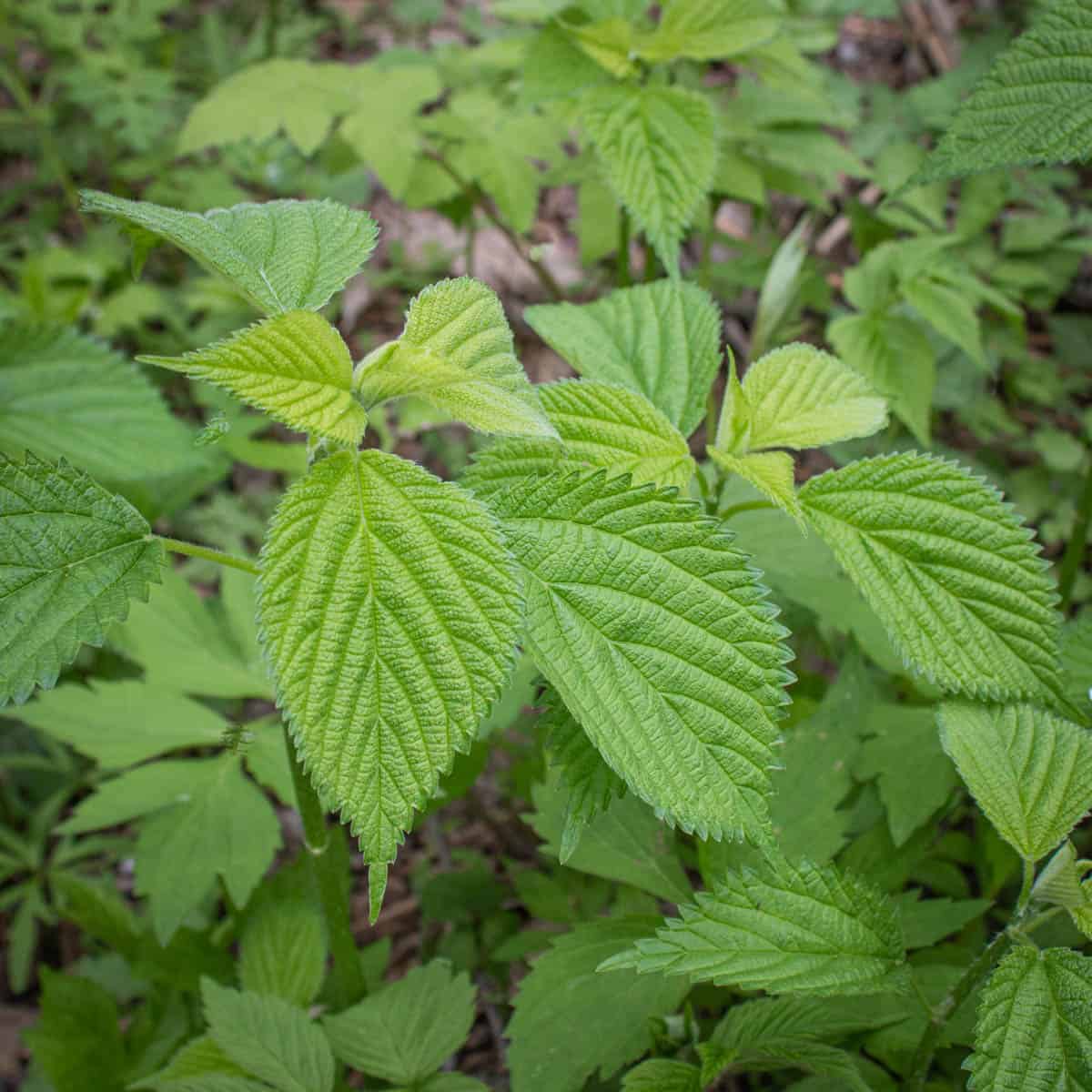
First I think it's interesting to know some of the different characteristics that differentiate it from the nettle most people know: common stinging nettle, or Urtica dioica.
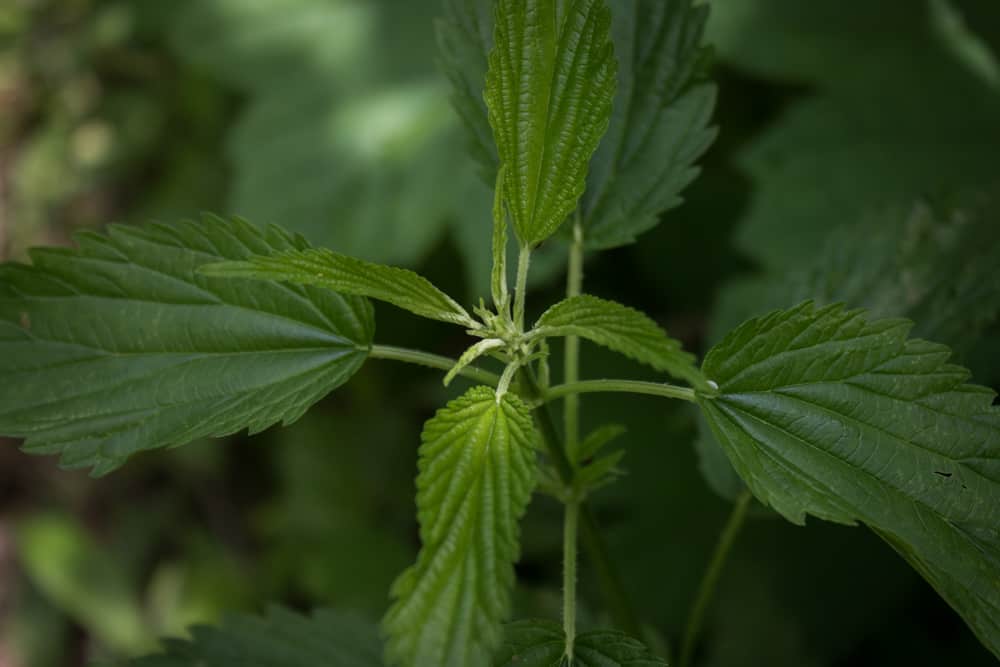
Stinging nettles have a more prominent place in American culture, although saying prominent is being really, really generous as most people still consider them annoying weeds. One, and likely the biggest reason for that is stinging nettles have been enjoyed in Europe for a very long time, and when immigrants from Europe came to America, they brought with them their culinary knowledge of plants.
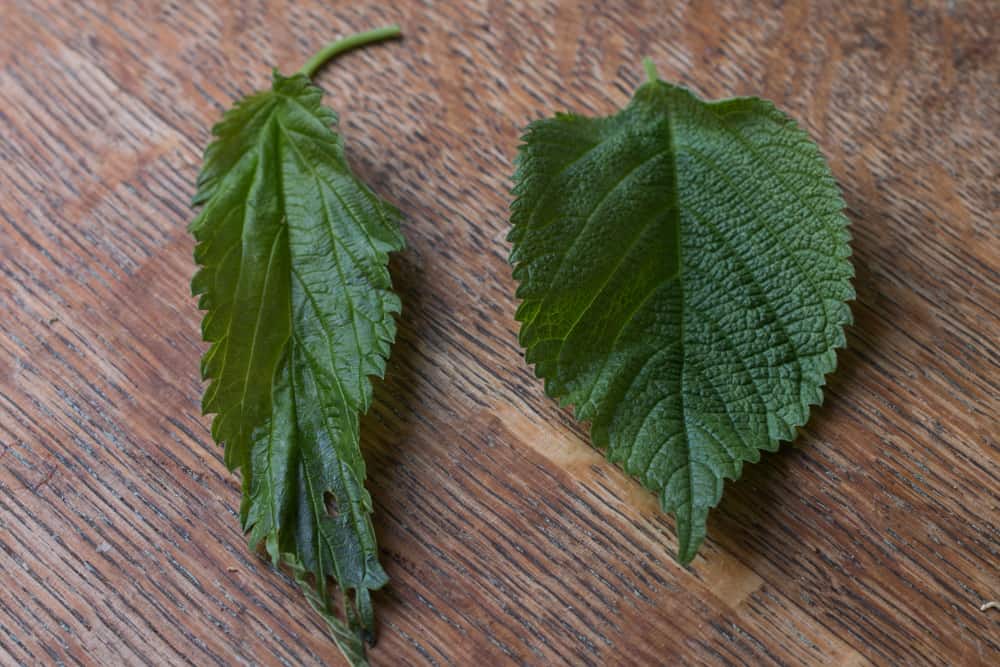
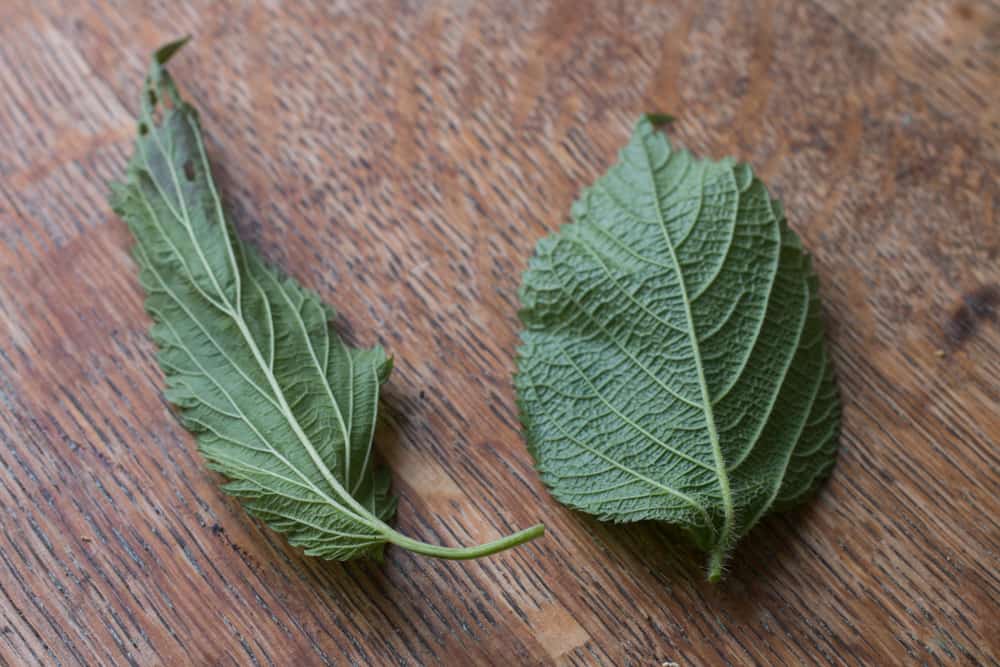
As the traditional nettle cooked in Europe was Urtica dioica, it naturally became the nettle of choice, since it was the only nettle they knew. This makes total sense, but those early immigrants were missing out on our Indigenous North American nettle (wood nettle).
The good news is you don't have to pick just one, you can enjoy both.
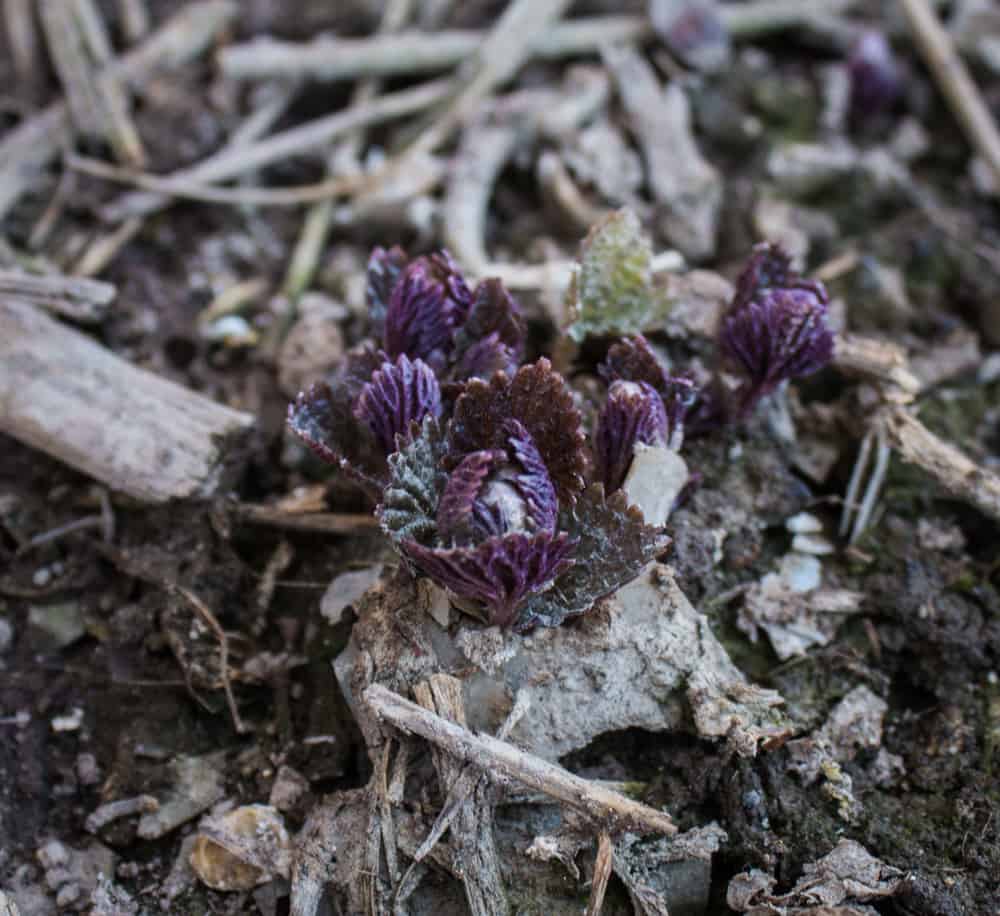
One of the best reasons for getting to know this plant is that it will expand the amount of wild greens you can pick and harvest. Stinging nettle is one, if not the very first plant I cook each year in the spring. Wood nettle does us a solid by maturing later, so as stinging nettles begin to grow tall and tough, the wood nettles are at a great stage for eating, although there are a usually a good couple weeks of overlap where you can cook the two together.
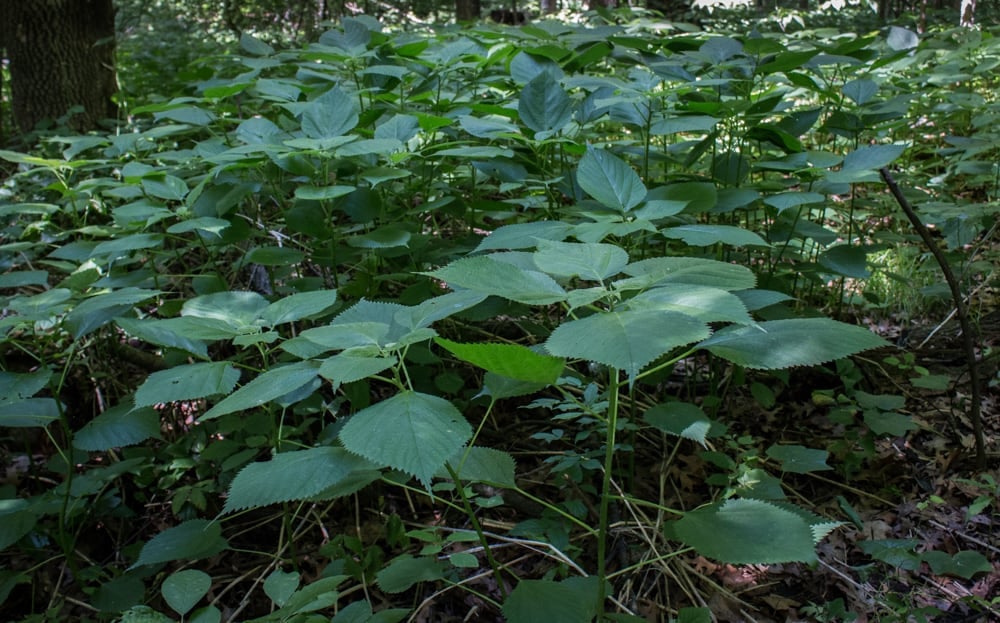
Flavor
This is another reason to look for these. Stinging nettles have a certain flavor that increases with their age, it's a sort of almost fishy, saline quality. I like the taste, and it's actually very important in my nettle soup as it plays off the garnishes that love a little oceanic taste: quail eggs and dill, and sometimes herring caviar if I have an expensive dinner coming up.
"Wood nettle is like a deep, rich spinach of the woods"
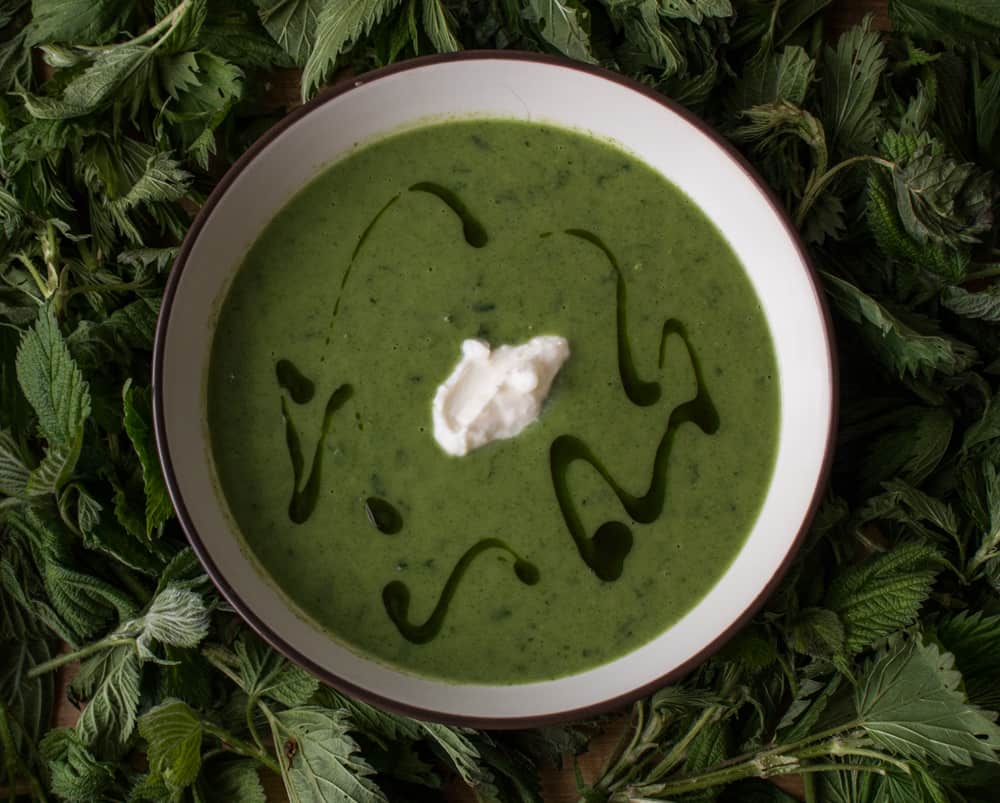
While I like this taste stinging nettles have, it can be too strong for some people, especially when it's older. The flavor of wood nettles is like a deep, rich spinach of the woods. It's mild tender, and almost like a little vegetable when the tender stems and leaves are blanched. Wood nettles do have a flavor though, and depending on how you cook them, it can be quite strong, so strong in fact that some people may not care for them. If you like big flavors like I do though, you'll want to give it a shot at least once.
Steaming
Blanching is what most people will be familiar when cooking nettles is brought up, but steaming is the best way I've found to harness their true flavor. The flavor of wood nettles, unlike stinging nettles and their aquatic taste, is deeply perfumed.
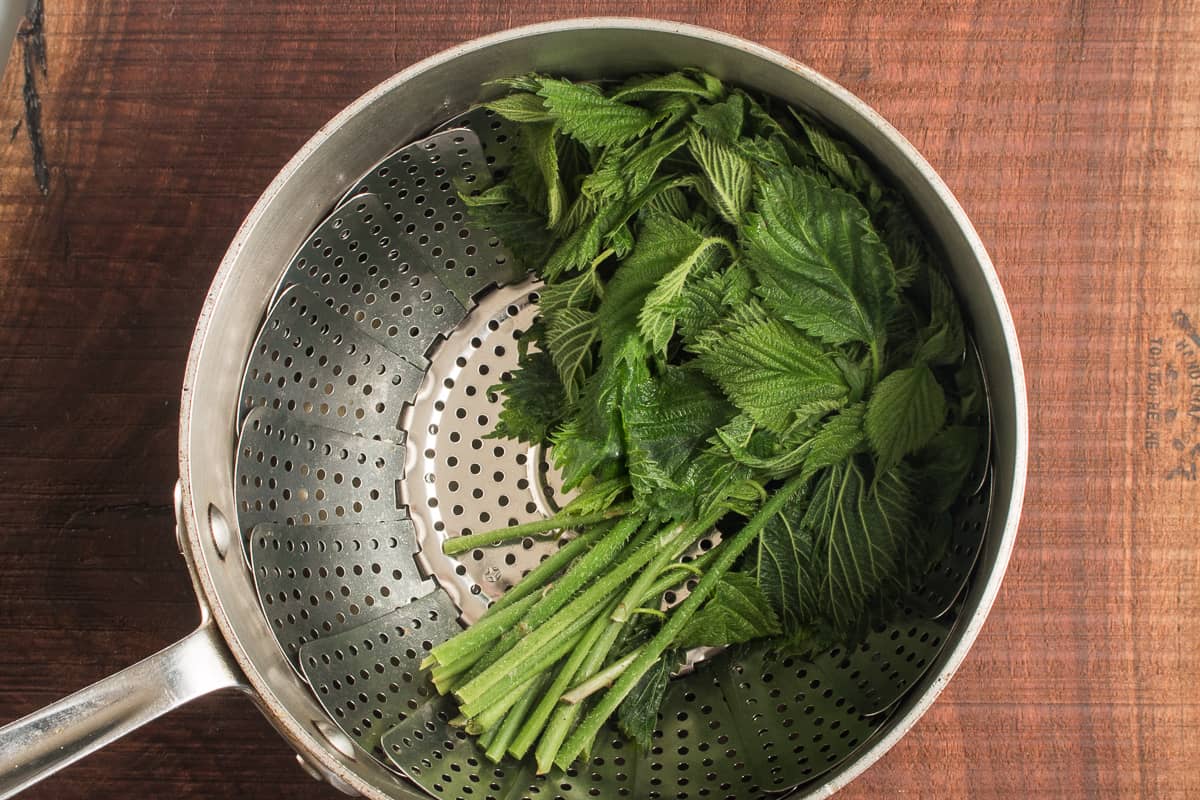
When I taste steamed wood nettles I taste floral aromas like the scent of apple and cherry blossoms, it's a very interesting flavor, and I've never tasted anything quite like it. If you blanch them, you won't taste it at all.
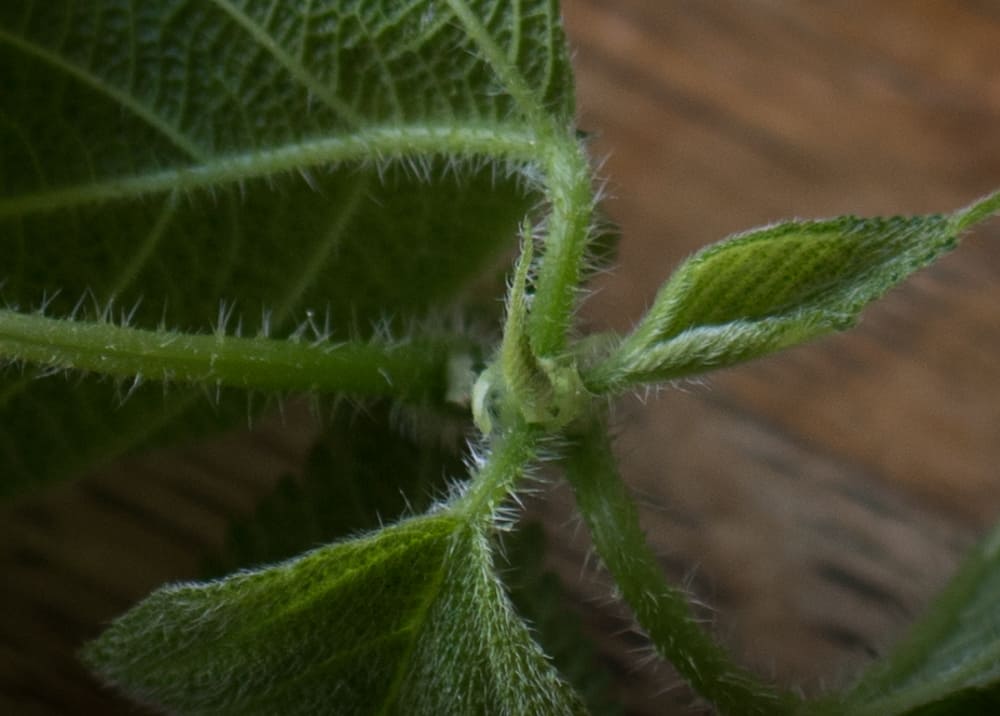
More Sting Than Stinging Nettle
The only thing wood nettle has more of than stinging nettle is in the sting, literally. I have no problem picking stinging nettles carefully by hand, wood nettles are a different story though.
The stingers are much more pronounced, especially as the plant ages, and unless you are very dextrous and careful (it can be done by only touching the middle of the leaves) you'll want to wear gloves when you pick these, at least on one hand.
The stingers are so pronounced that they will go through clothes, even my heavy duty foraging pants, something that rarely if ever happens when I pick stinging nettles.
Wood nettle shoots
Wood nettle shoots are one of the biggest differences that Laportea canadensis has from common stinging nettles. The shoots are delicious, and a bit like thin asparagus with a few tender leaves on the top. I highly recommend them.
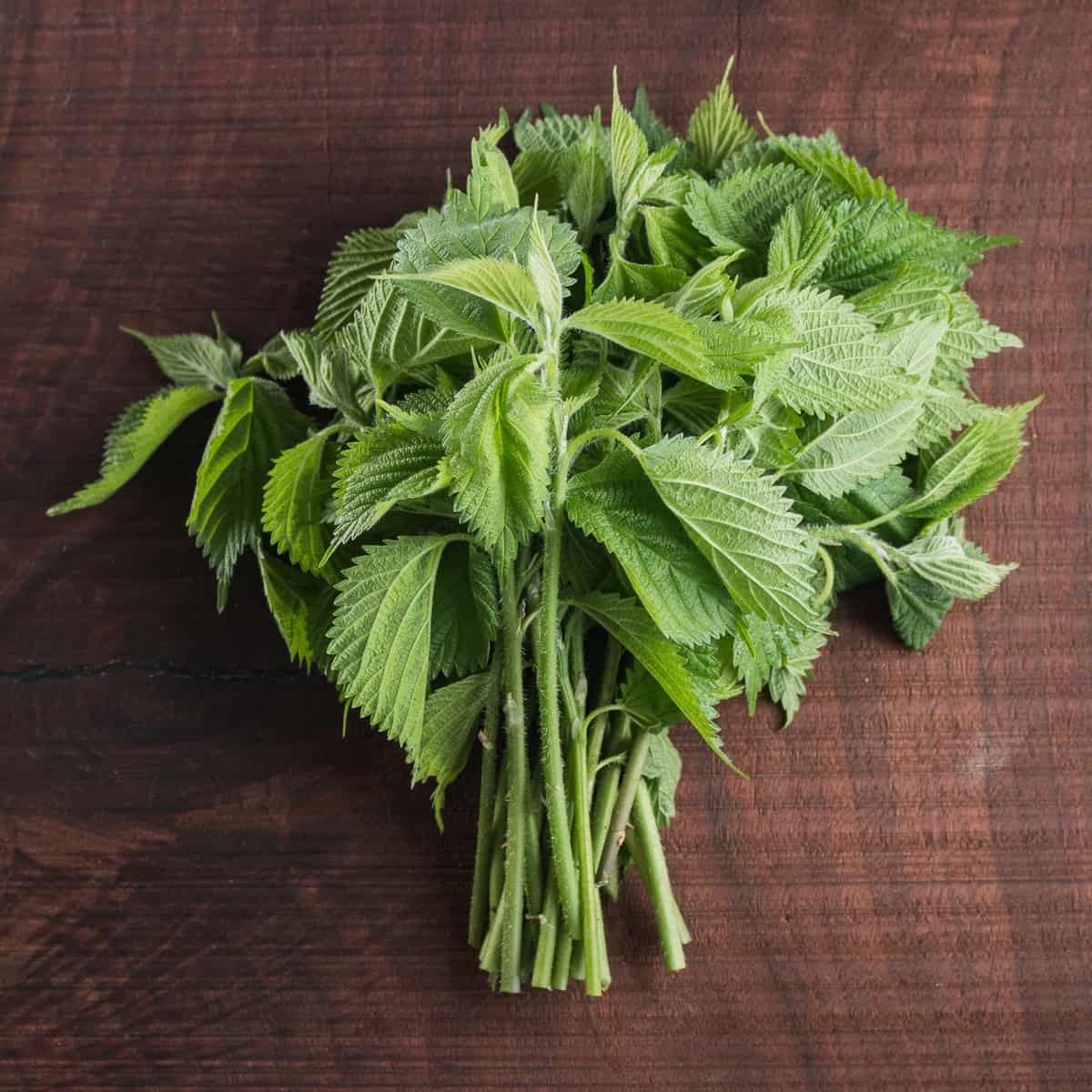
General Harvesting, Storing and Cooking
I like to use a scissors to clip the young tops of the plants, or the shoots when they're young. I put the leaves in a paper bag, then bring them home and refresh in a sink of cold water.
After they get refreshed in the water, they get thoroughly dried (this is important, if there is too much moisture left over from washing the nettles will disolor and go bad rapidly) and put in a plastic zip loc with a damp towel and a hole punched in the top for air. Kept like this, wood nettles will keep for at least a week or two in your fridge: a wonderful shelf life for fresh greens.
To cook wood nettles, treat them just like stinging nettles. There's two options here, blanched, or cooked from raw, depending on what I'm doing I like both preparations. Another option is that nettles can also be frozen raw after washing, then thawed, which will also denature the spines, known as trichomes.
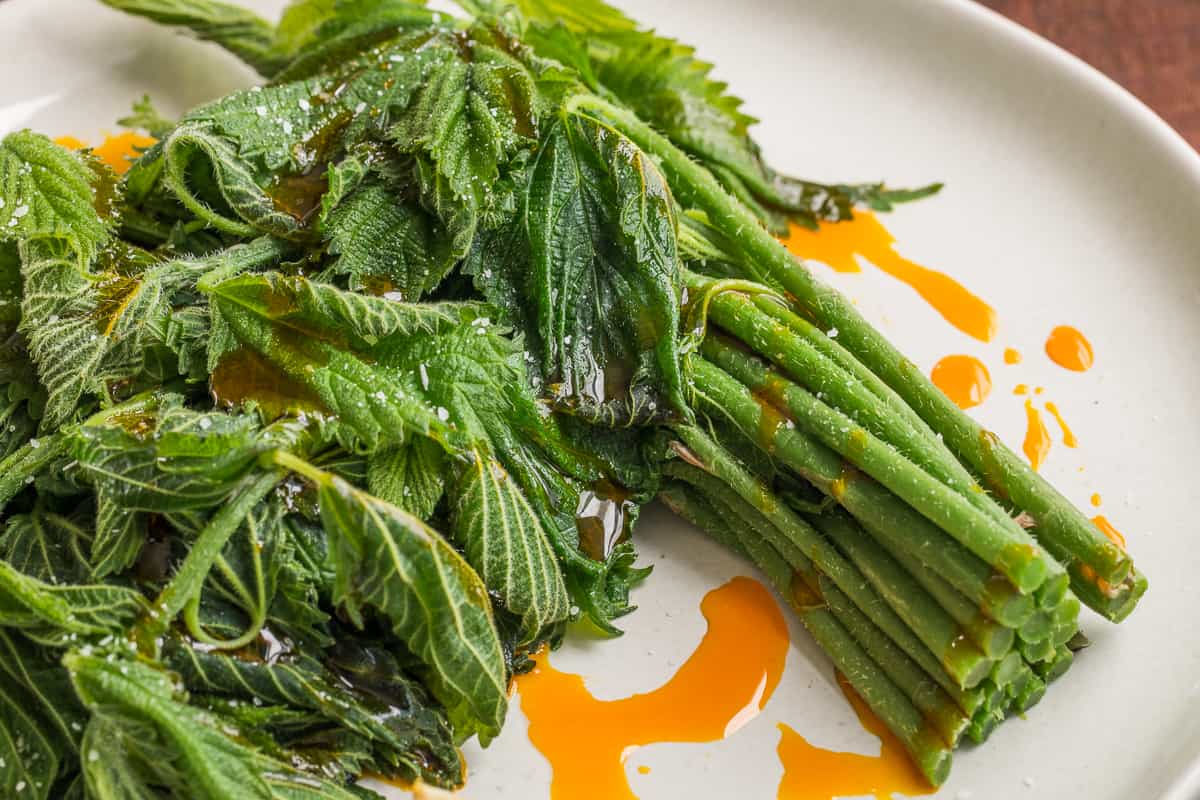
To blanch wood nettles for freezing or storage
Blanching is useful if you want to freeze your nettles, or if you want to just free up some space and process and hold mass quanities of greens, like I often do during the season. Here's the method:
Have a cold water or ice bath ready. Bring a stock pot half full of water to a simmer, then add salt until the water tastes like the sea. Working in batches, put the nettles in the simmering water using tongs or gloves for a about 30 seconds and stir until they're completely wilted. Remove the nettles to the cold water to chill, then repeat the process with the remaining nettles.
After the nettles are all blanched, squeeze the water out as much as you can, then transfer to a labeled, dated contiainer and refrigerate or freeze until needed. It's very important to use salted water, blanching food in unsalted water will have a much shorter shelf life as well as making things taste better.
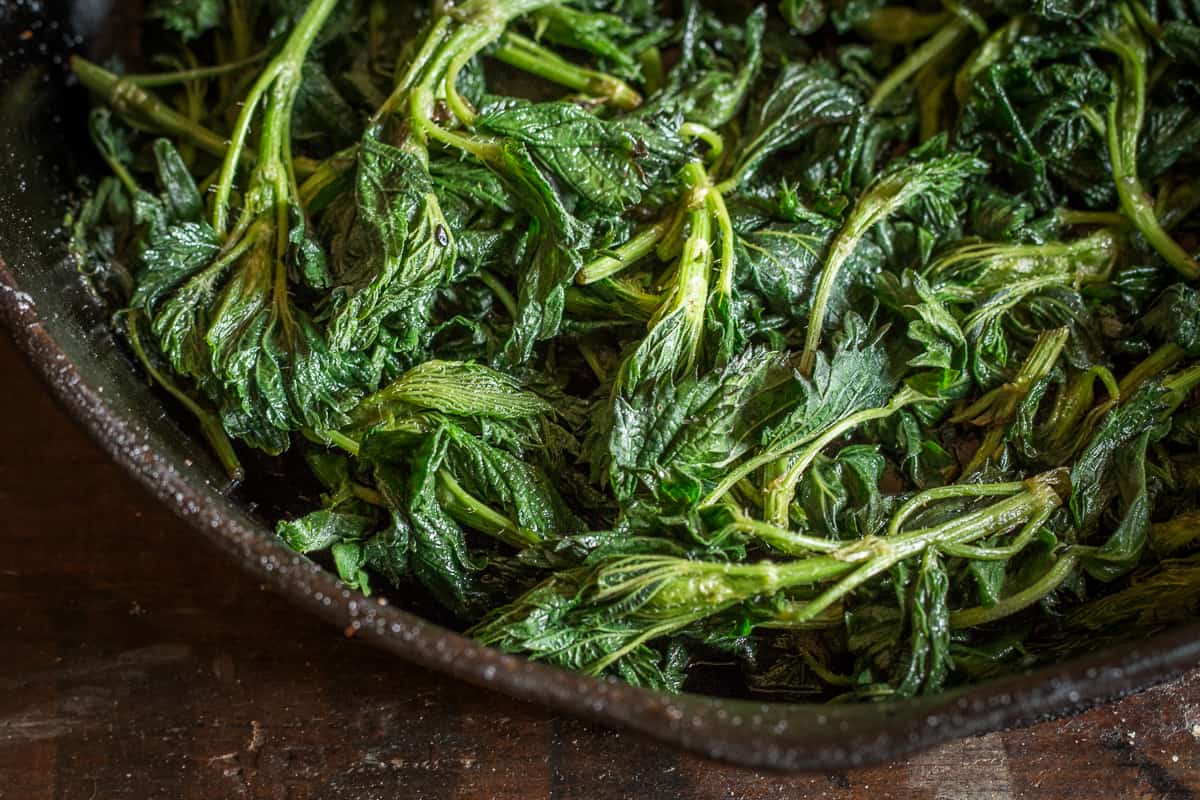
Why are my blanched nettles dark?
The nettles need to be blanched for at least 30 seconds. Under-blanching can result in the chlorphyll green not being locked in, resulting in splotchy dark spots, or nettles that are completely brown and not green.
To cook wood nettles from raw
Take your washed, dried wood nettles and, using gloves or tongs put them into a wide pan with a lid, add a little butter and stock, salt and pepper to taste. Cook, covered until the nettles are totally wilted and hot throughout, about 4-5 minutes, then drain and serve. My favorite preparation is to glaze them with butter and their natural juices.
Steamed Wood Nettle Shoots
Equipment
- Steamer basket and appropriately sized tall sided pot, like a small pasta pot
Ingredients
- 8 oz fresh wood nettle shoots washed and dried if needed
- 2 tablespoon Extra virgin olive oil or melted butter Pictured is acorn oil from Sam Thayer
- Kosher salt or flaky finishing salt like maldon, to taste
Instructions
- Put a few inches of water in the bottom of the pot, then turn the heat to high, bring to a boil, then add the steamer basket, wood nettle shoots, and cover the pot. Turn the heat to medium high and set a timer for 5 minutes.
- After five minutes, taste a shoot.
- The shoots should be bright green and tender, but still have a bit of life to them--don't cook them to mush.
- Allow guests to serve themselves from the pot so the shoots hold their heat. Pass the salt and oil at the table.
Butter Glazed Nettles
Ingredients
- 8 oz fresh tender stinging nettles or wood nettles in the summer, nettle tips can be gathered
- 2 tablespoons unsalted butter or more
- Kosher salt and fresh ground black pepper
- Water or stock a small amount--just enough to wilt them
Instructions
- Put ½ inch of water in a wide or deep pan that can fit the nettles.
- Pack the nettles in, cover the pot and turn the heat to high. When the pan is hot, take of the heat and stir the nettles around to help with them, then put the cover back on the pot and cook some more.
- Continue cooking, reducing the heat if the pan threatens to dry out, until the nettles are tender and taste good to you. When they're tender, drain off as much liquid as you can, then add the butter, salt and pepper to taste and continue cooking, stirring rapidly to distribute the seasonings.
- Taste the nettles again and adjust the seasoning for salt or more butter. When they're delicious, buttery and tender and most of the remaining liquid has cooked into the leaves, serve.

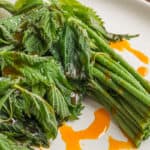
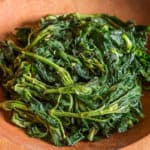
Carla Beaudet
Have a good source of common stinging nettles, but have been hoping to find wood nettles for a long time. Found a huge patch of these today. They were in bloom, so likely too late to harvest this year, but now I know where I can find them. What time of year do you harvest them in MN? Our season is likely to be several weeks ahead of yours (USDA Zone 5b here. Much more Southernly light, but ~3000 ft. elevation.).
Alan Bergo
Yes you want them before they bloom. The way you harvest is just like stinging nettles--I'll pick them when they're very young when they resemble shoots, then I'll keep picking the tender tops for as long as I can. That can go until about the first or second week of June here in MN depending on where I am. If you pick some tops and they cook up stringy you'll know it's a little late.
Nadia Billig Daniel
Love foraging for nettles! For those wanting more clarity on difference between wood nettles vs sting nettles the leaves on WN are alternate and on SN opposite.
Alan Bergo
Thanks Nadia
N. Astrid Hoffman
Love this article (your book and everything you write) so thank you for your amazing work! Today my husband I were taking about the blanching of wild greens for later use. We were wondering what would a good alternative to ziploc bags would you recommend? Ideally a glass container and something that preserves well while preventing freezer burn. Thank you! - Astrid
Alan Bergo
Hello. Totally understand trying to avoid plastic. Unfortunately it’s the best option for freezing. Freezing something that’s wet in glass can cause the glass the shatter as the water freezes and expands. If you out cooked greens in a container that’s not air tight, you’ll get freezer burn.
Elizabeth
I've had two run-ins with nettles, both in my childhood suburban backyard woods, but about 25 years apart. The first one, which happened when I was probably seven years old, is burned in my memory as a delirious experience of fiery pain. It started while I was playing peacefully down by the creek. I started to notice a strange, electrified tingling in my legs and arms, and then a few seconds later it was everywhere, all up my back and sides and chest, and it had turned into a powerful stinging that filled my senses leaving room for no thought other than RUN. By that time there was really no telling the stinging from the fear that filled me and sent me rocketing back up the hill through the trees toward home. I stumbled back up into the yard, screaming, and I screamed all the way into the house. My Boy Scout brother appeared on the scene and instructed my mom to pop me into the bathtub, while he took off into the woods himself. A few minutes later he was back next to the bathtub with his hands full of a different plant that had soft dark green leaves and a bobbing orange flower or two. "Jewel weed," he said, "we need to rub this on. It's the antidote." So, he and my mom rubbed me all over with that magical plant, and the pain disappeared stroke by stroke. My weeping turned to fascination and a deep gratitude that has lasted all my life--both to my brother and to the plant: jewel weed represents love to me. I resolved never to touch those evil nettles again, now that I knew what they could do to a person...but I didn't actually learn enough woodcraft to recognize them a couple of decades years later when as an adult returning from a long walk I decided to take a short cut down through the creek bottom back to Mom and Dad's house. I stood at the top of a bank on one side, looking down across the top of a vast expanse of identical upright green plants with tall stalks and regularly alternating leaves, asking myself whether these could be nettles...and deciding that there were so many of them they probably weren't, and that anyway my memory was probably just a childish exaggeration of the discomfort I'd felt. If I had to turn aside and find a way around them, I'd add ten or fifteen minutes to the walk, and I knew I needed to get back to take over caring for the kids. So I charged right down into the stand of plants. They were tall, easily 4' high (and I would have said taller if I hadn't read a lot of descriptions since then telling me that's about the limit for wood nettle...but I'm pretty sure that's an emotional assessment of their gigantic power, rather than a true measure of their physical size). In a moment I was in a sea of them, and most of my body had been brushed by the stems. And another moment later, that electrified feeling began. All the hairs on my body stood up, the truth hit me, and I broke into a desperate, panicked run. I knew that if I found some jewel weed I could wipe the pain away, but I was half-blind with it, and the only possible action I could take was to get out of there, make it home, and get myself into the shower. So there I was, somewhere around 32 years old, mother of three, with two master's degrees under my belt, most of the work done toward a PhD, and a teaching certification on the wall, supposedly a person of some wisdom...running for my life from a common native plant that had been growing down the hill from me all my life and that I ought to have learned to recognize and respect by then. This time, after I had washed up and after the stinging had subsided--the goosebumps actually lasted longer than the stinging itself--I got serious about learning to recognize nettles. However, I'm now 47, and after all of these years I still haven't learned to eat them. It's time I fully appreciated them! I'll be traveling back to southern Illinois in a few weeks, and I absolutely can't wait to get back down to that spot by the creek--wearing gloves this time and paying plenty of attention to what I'm walking into--so I can greet those nettles and show that I've finally learned a lesson about taking the trouble to understand what I'm walking into. From what I've read, by this late in the summer they're probably going to be flowering, so it's not the best time to harvest them, but next spring I'll be on the lookout for edible young nettles closer to my own home. I'll definitely try out this recipe!
kim
great story and what we can learn through painful experiences. thanks for sharing, for turning natures gifts around.
Kim
Alan Bergo
Thanks Kim.
Steph
Thanks for the information. Can I juice Canadian wood nettles?
Alan Bergo
I don't see why not.
Gr'ma C
As a person of a "certain age", nettles were just "itchweed" and something to avoid when we were kids. Today as a grandma and somewhat novice forager, imagine my delight to find an abundant supply of both stinging and wood nettles in the woods! After checking your website and some of my foraging books to confirm I was actually picking nettles, we've enjoyed several meals of them and I've just prepared a few batches for the freezer. Thanks, Alan, for your beautiful website and for sharing your creative recipes and passion for wild food!
Alan Bergo
Hey Grandma C, thanks so much. I'm really glad if I helped you in any way discover nettles. A wonderful plant.
Lee Diggs
Thank you for this wonderful writeup on wood nettles. They are one of my absolute favorite early spring foods, creamy and mild, and I look forward to them. I love them the best when they're young shoots.
Alan Bergo
Hey Lee! Agreed. Such a good plant. If you haven’t tried them steamed you *musf* try them. The flavor is completely different from “Dioica-type” nettles.
Erica Coda
I’m in Northeast Wisconsin, near Eagle River, and I haven’t seen any Nettles in our forest. What type of forests can you find them?
Alan Bergo
Look to where there are maples. They love maple hardwood.
Erica Coda
Thank you!!
Karen
Oh my, thank you. Wonderful article!